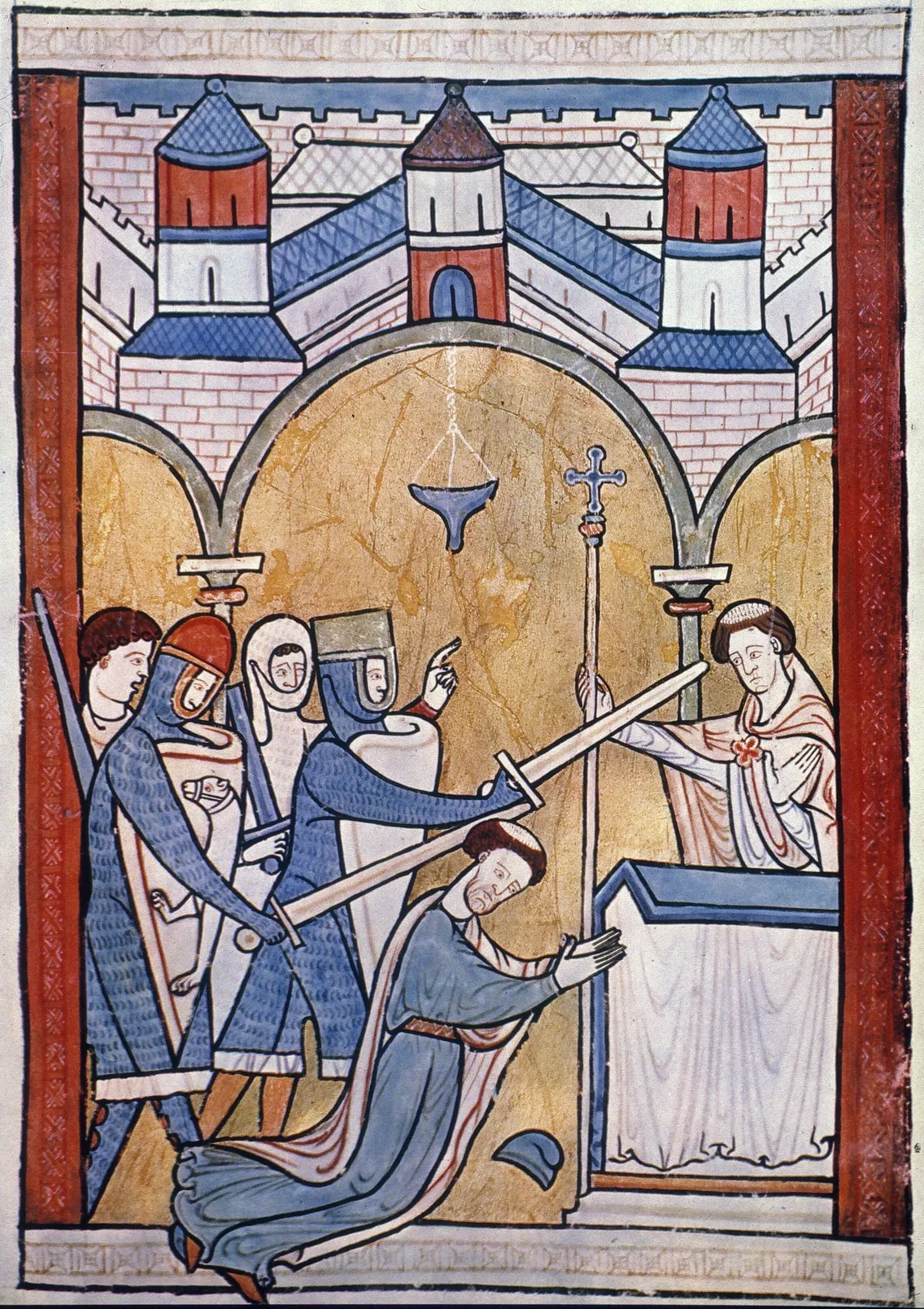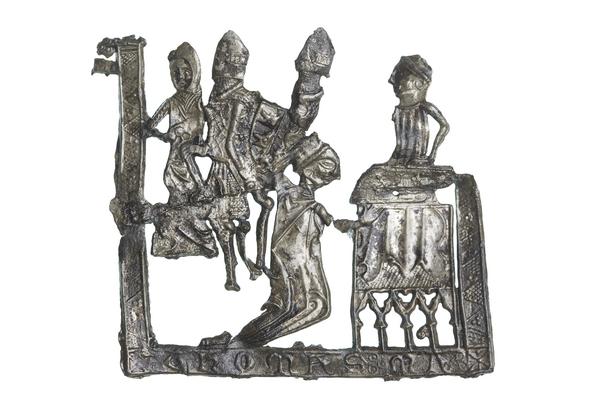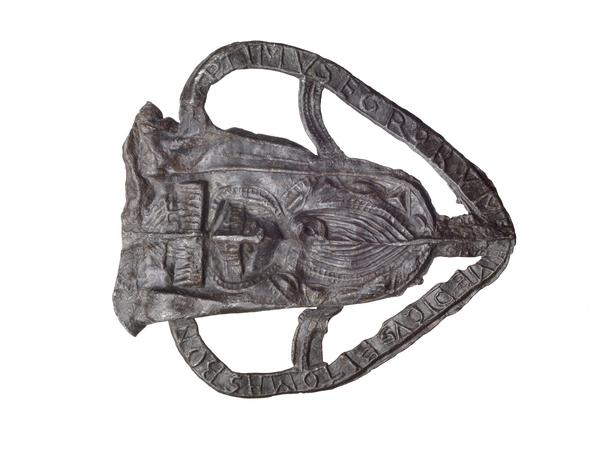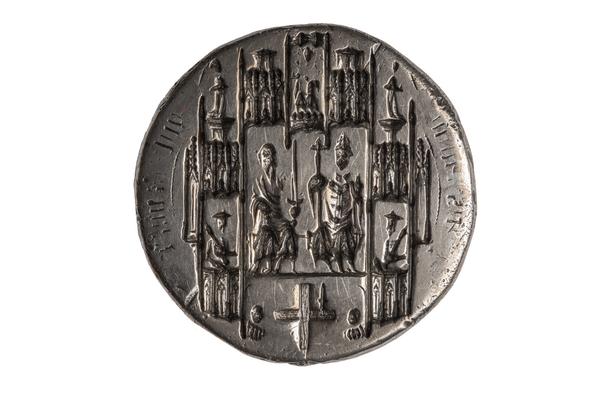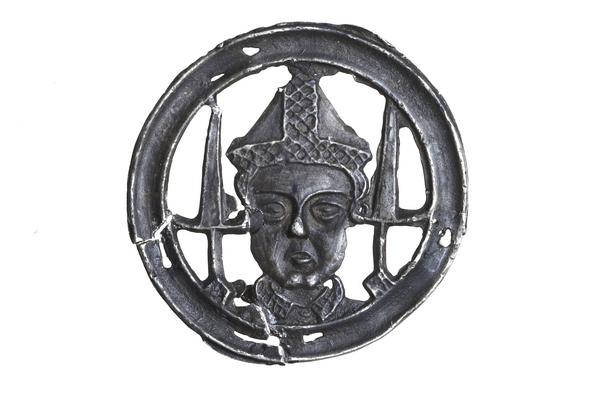The murder of Thomas Becket
The rise and fall of Thomas Becket sent shock waves through medieval Europe. His disputes with the king ended in spilled blood. But the cult of saint Becket has lasted ever since.
1170
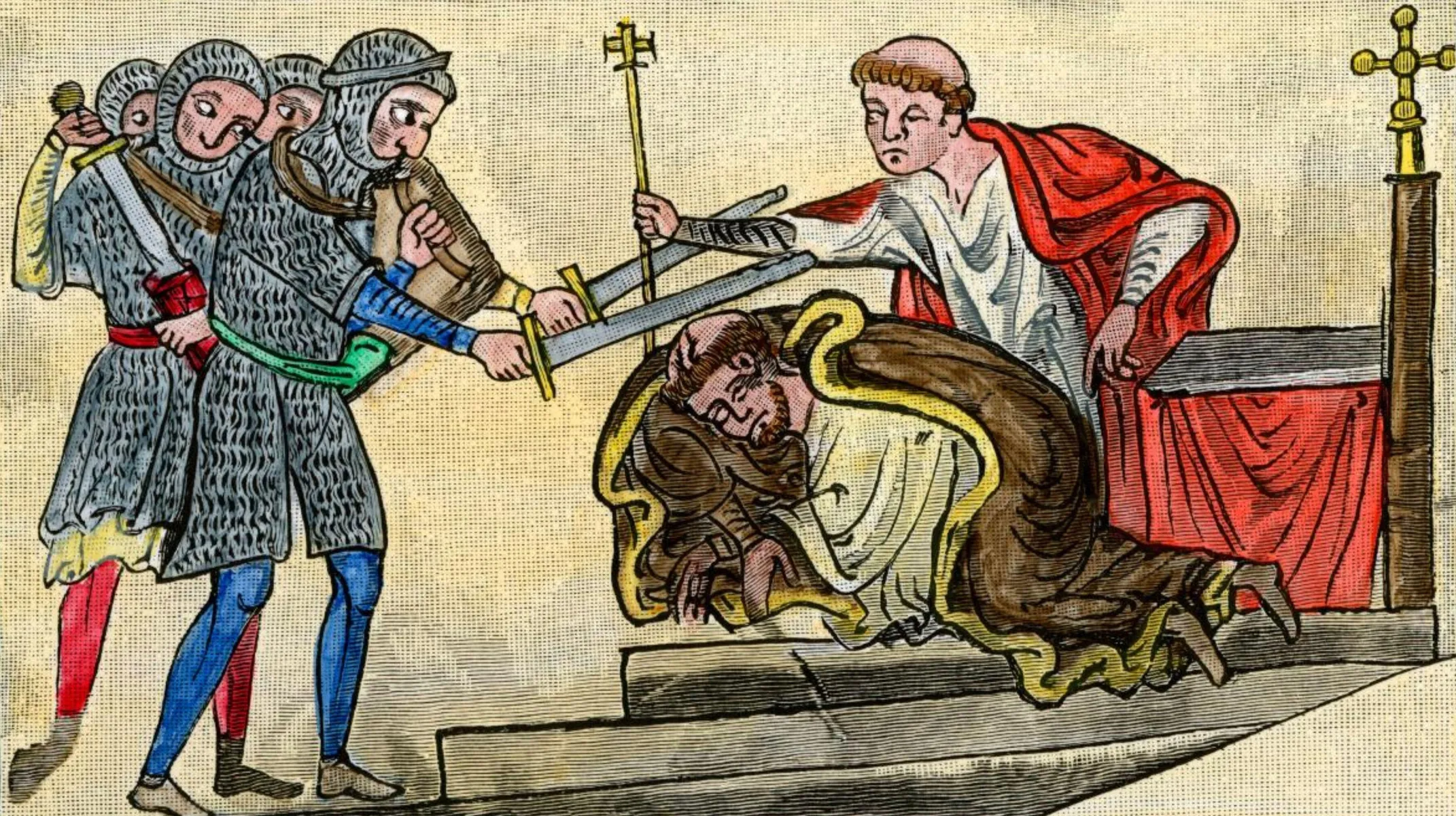
The archbishop of Canterbury – killed in Canterbury Cathedral.
A martyr and miracle worker
Thomas Becket rose through the ranks of 12th-century government to become the archbishop of Canterbury. But his longstanding feud with King Henry II saw him exiled and then later assassinated in Kent's Canterbury Cathedral in 1170.
News of his murder spread far across Europe and inspired a cult of followers. He was made a saint. His blood was said to work miracles. And, adored by those from his birthplace of London, the so-called ‘Thomas of London’ was named a patron saint of the city.
Becket’s rise to power
Becket was born in Cheapside, in the City of London, in around 1118 to parents who had settled in London from Normandy, northern France.
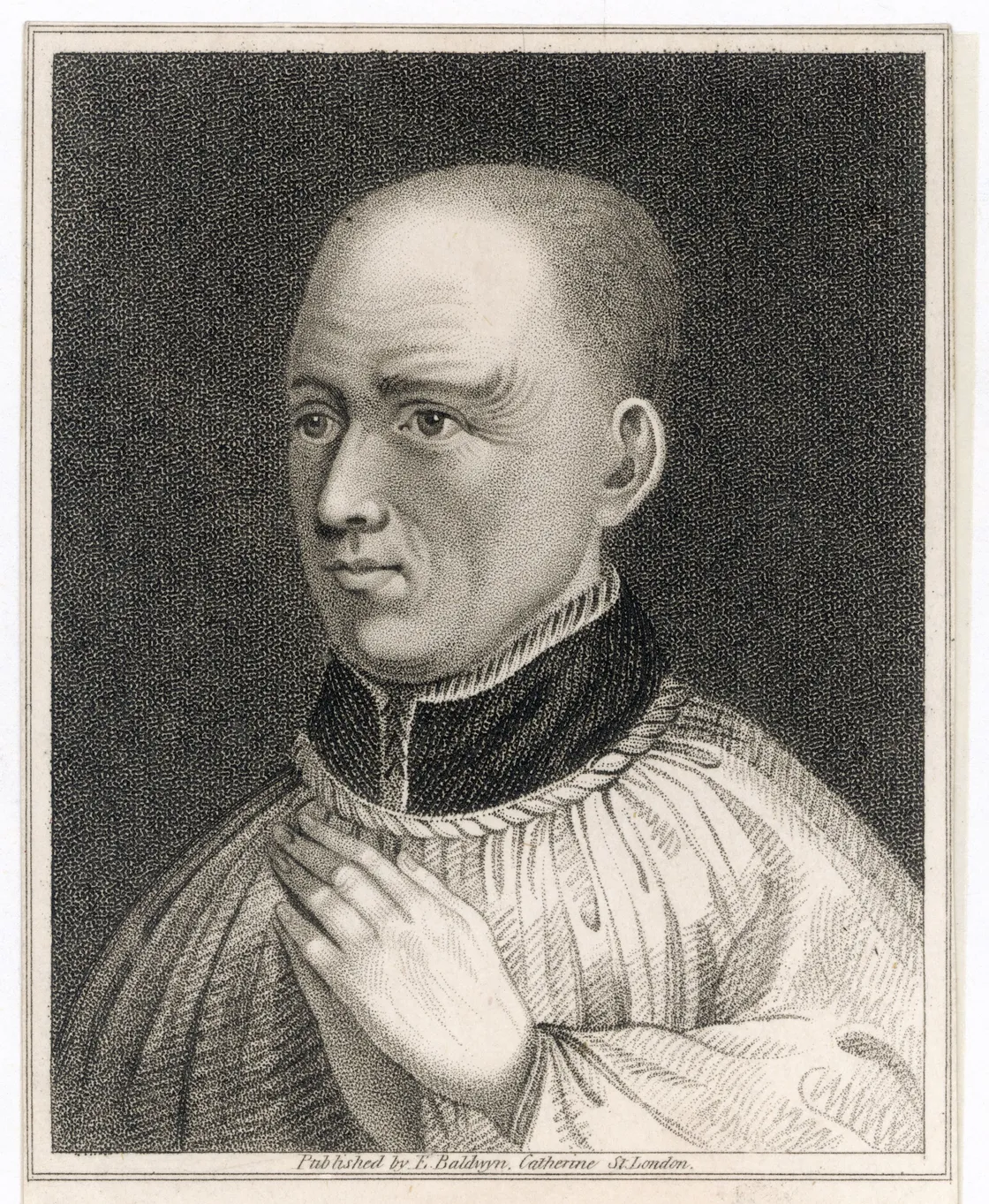
Becket depicted as Saint Thomas of Canterbury.
His early years were comfortable. After studying law and political thought at the universities of Paris and Bologna, he began his career working for a London financier. He then entered government service, rising through a series of official roles to become Chancellor for the new King Henry II in 1154. A friendship with the king blossomed.
Henry made Becket archbishop of Canterbury in 1162. But their relationship soon fell apart. Becket resigned as chancellor and the pair argued over the rights of the church and the crown. Becket was charged with corruption and for showing contempt for the king. So he was forced to flee to France in 1164. He was protected by Henry’s rival, the king Louis VII.
Bloody murder in Canterbury Cathedral
Becket returned to England in 1170 thanks to the intervention of Pope Alexander III, who helped the pair make amends. But this peace was short-lived. They began quarrelling again and in November, Becket expelled his political opponents from the church. Henry was furious.
On 29 December, Becket was assassinated. Four knights, acting on what they thought were the king’s wishes, hacked him to death in Canterbury Cathedral. But it’s not clear if Henry directly ordered Becket to be killed. Or if he even said the famous line, “will no one rid me of this troublesome priest?”.
“Becket’s blood spilled in the cathedral”
Becket the martyr
This gruesome murder, which left Becket’s blood spilled in the cathedral, turned him into a martyr. Pilgrims began making the journey to his burial site in Canterbury’s crypt. Even Henry was forced to ask for forgiveness at his tomb.
Popular souvenirs, like these pilgrim badges in the collection, were produced depicting scenes like his return from exile and his burial. Monks even sold holy water mixed with drops of blood saved after his death in small vessels called ampullae.
And Becket the saint
Becket’s blood was credited with miracles that were reported first at his tomb, and then from further afield. Diseases were reportedly cured. The dead were even said to be brought back to life. In 1173, to recognise these miracle healings, Pope Alexander made him a saint.
In 1220, his remains were moved to a purpose-built shrine in the cathedral. It became one of the most important pilgrim sites in Europe.
A patron saint of London
Becket became widely popular with his fellow Londoners after his death. He was made one of the patron saints of the city, along with St Paul. Londoners prayed to him in times of trouble.
Across the capital, people made memorials championing Becket’s connection to London and his international reputation. In 1173, for example, an infirmary in Southwark was renamed St Thomas’ Hospital in tribute, and it remains open on its current site in Lambeth.
Many Londoners also journeyed to his shrine in Canterbury. They did so for 300 years until 1538 when, under the order of King Henry VIII, the shrine was destroyed.


